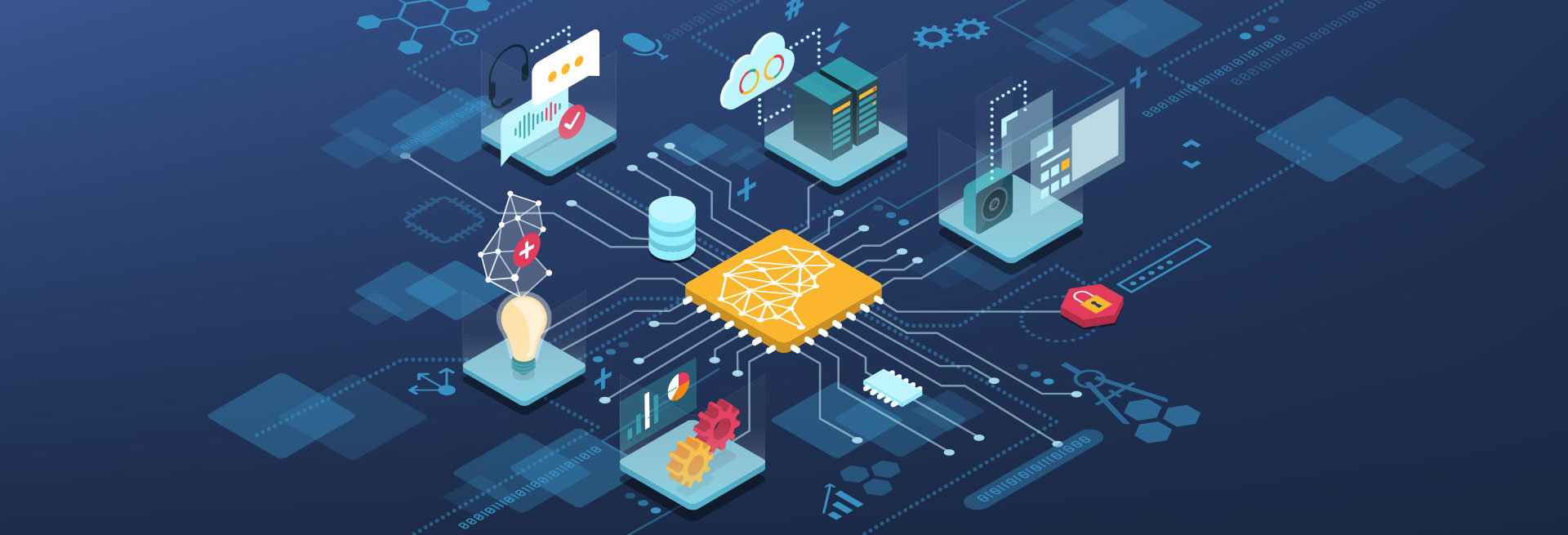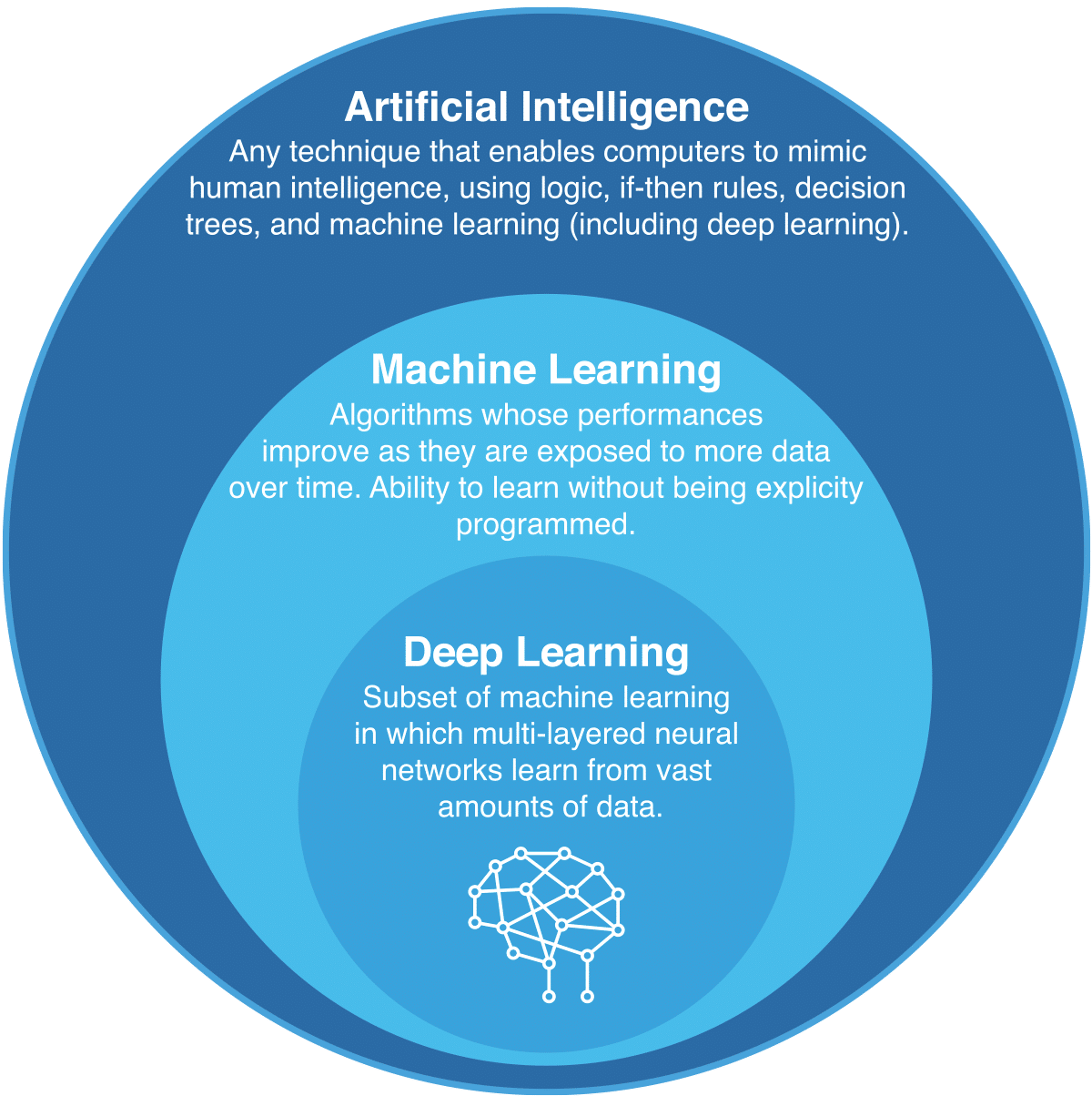Analytics Blog

How to Get Your Business AI Ready to Improve Customer Experience
Providing an engaging customer experience is no longer optional for businesses but instead, is demanded by users. In fact, the 5th Edition of the “State of Marketing Report” by Salesforce reveals that 60% of customers expect companies to take it one step further and anticipate their needs. As businesses strive to keep up with customer expectations and engage with them in a relevant manner, technology is paving the way to meet these needs.
While often portrayed in the media as robots stealing people’s jobs, artificial intelligence (AI) has proven its ability to improve the customer experience. The Salesforce report shows that businesses are increasingly embracing the use of AI to drive personalization and overall, improve the customer experience. In fact, the use of AI has grown by 44% since 2017.
So how does this impact your business? First, if improving the customer experience isn’t already a top business priority then it needs to become one. According to Salesforce research, 80% of customers stated that the customer experience is as important as the product or service being offered. Second, your team should evaluate the methods that are currently in use to meet and, more importantly, anticipate customer needs. If AI is not already a part of the discussion, then it needs to be introduced.
“…if improving the customer experience isn’t already a top business priority then it needs to become one.” Click & Tweet!
With that being said, we strongly caution against diving into AI without proper planning. For AI to be successful in driving the customer experience, your team needs to understand how to get AI ready, including:
- Understanding the difference between the buzz words
- Identifying the business need
- Learning how to make data AI ready
AI and Machine Learning: What’s the Difference?
 Before having a discussion on AI, it’s important to understand the relationship between the buzz words, AI and machine learning (ML). John McCarthy coined the term “Artificial Intelligence” and defined it as “the science and engineering of making intelligent machines, especially intelligent computer programs.”
Before having a discussion on AI, it’s important to understand the relationship between the buzz words, AI and machine learning (ML). John McCarthy coined the term “Artificial Intelligence” and defined it as “the science and engineering of making intelligent machines, especially intelligent computer programs.”
Machine learning is not separate from AI, but instead is a subset of AI. Tom Mitchell’s definition for ML is the most widely known: “A computer program is said to learn from experience ‘E’, with respect to some class of tasks ‘T’ and performance measure ‘P’ if its performance at tasks in ‘T’ as measured by ‘P’ improves with experience ‘E’.”

In layman’s terms, machine learning is simply a technique for realizing AI. Machine learning involves large amounts of data and algorithms to learn how to perform the task. The important takeaway here, and what will become relevant later on as your team gets AI ready, is that ML cannot access any knowledge outside of the data provided.
How to Use AI to Improve the Customer Experience

As businesses adopt AI to improve the customer experience there isn’t necessarily one predominant use case. Amazon is well-known for using machine learning to provide product recommendations based on the customers preferences.
However, using machine learning to provide customer recommendations is not limited to retail use cases. For example, Adobe AI powered personalization (Adobe Sensei) allows businesses to deliver personalized recommendations in other verticals, including publishing, B2B and the travel industry.

Another example where businesses are using AI to improve customer experience is with online customer support. Specifically, more businesses are turning to live chat bots to provide assistance to customers on their website. The benefit of a live chat bot is that it can provide real-time assistance at all hours of the day, and generally at a lower cost than having a live chat representative.

Some businesses are taking AI a step further and coming up with creative use cases that make it easier for customers to make a decision and engage further along the customer journey. For example, Ulta’s mobile app allows customers to try on makeup virtually in their GLAMLab.
 The ability to try makeup on virtually instills greater confidence in the customer that they are picking the right product and reduces the likelihood of them returning their purchase.
The ability to try makeup on virtually instills greater confidence in the customer that they are picking the right product and reduces the likelihood of them returning their purchase.
Looking at these AI-based customer experience examples, the main takeaway is that businesses are improving the customer experience in a variety of ways. The key is to determine which AI solution works best at meeting your specific business needs.
Where Does AI Fit Into Your Business Needs?
Businesses that prioritize the customer experience likely have an established culture of experimentation. With experimentation, these businesses understand that testing the customer experience shouldn’t be done for the sake of testing but should be used to eliminate known points of friction in the customer journey.
A similar approach needs to be taken when it comes to adopting AI. In other words, there shouldn’t be a rush to implement AI just for the sake of using it. Instead, your team needs to strategize about how the AI solution will solve actual business problems. When having this discussion with your team, the key to this strategy is to
- focus on well-defined problems vs broader, more general use cases, and
- identify a measurement for success.
Identify a Specific Use Case
A poor use case for AI is one that is too broad. For example, the use case “we want to make customers happy” lacks specificity and doesn’t provide insight into what friction is actually impacting customer satisfaction. Without this information, it is difficult to know where exactly to implement AI. For example, to make customers happy, do you need focus on personalized recommendations or provide better customer support? Taking the time to research and identify specific business needs or areas of friction in the customer experience where AI can be used will be essential for its success.
Flipkart takes the right approach by utilizing ML to solve a well-defined problem unique to their business. Specifically, Flipkart does business in India, where home addresses lack standardization and accuracy: “Factors like lower literacy rates lead to customers entering incorrect PIN codes, or commit spelling errors while filling up addresses, magnifying the problem. A lot of Indian place names are translated from local languages into English phonetically, resulting in variable spelling patterns.“
The inconsistency in these addresses impacts speed of delivery, which among things, harms customer satisfaction. To address this issue, their team created a ML model “consisting of different locality features that people commonly write in addresses, which is gaining accuracy with incremental deliveries.”
Implementing machine learning is expected to improve speed of delivery, increase efficiencies and reduce the cost of labor required to manually sort packages. Since Flipkart took the time to identify a specific business problem, their team was able to leverage machine learning to solve a real issue that was impacting the customer experience, and their business.
How Will Your Team Measure Success?
In addition to having a well-defined use case, your team’s strategy should also identify a measurement for success. An essential question to ask the team is, “what’s the business result we are trying to achieve with AI or ML?” Knowing how success will be measured beforehand is imperative in understanding the true impact of AI on customer experience.
“Knowing how success will be measured beforehand is imperative in understanding the true impact of AI on customer experience.” Click & Tweet!
If your team is unable to identify these metrics (e.g. transactions, return rate, call volume, delivery costs, net promoter score) then the use case is likely not the best one to move forward with for AI.
After your business use cases and measurement for success have been identified, the next step is to evaluate the state of your data, as this will serve as the foundation for your AI solution.
How to Make Customer Experience Data AI Ready

As mentioned earlier, the driving force behind AI and machine learning is data. To get your business AI ready, your team must have a solid understanding of the data that is currently available. This includes knowing the types of data available, as well as where and how it is stored (e.g. analytics data, data from customer support, qualitative data, etc…). Moreover, it is equally important to understand what data is missing but necessary to execute AI for your identified use case. If specific data points are missing, a plan should be in place to start collecting such information prior to implementing AI.
One of the biggest challenges that businesses need to overcome when adopting AI/ML is having easy access to all this necessary data. Oftentimes, different data types are siloed, which reduces the diversity of data available for use in AI, and increases the risk of inaccurate or incomplete data. This will lead to sub-optimal outcomes in AI.
Bottom line: to make data AI ready it is imperative to transition from siloed to shared data.
How to Transition From Siloed Data to Shared Data
Making this transition is easier said than done, but the following steps will help your business get started:
- Establish a culture of knowledge sharing
- Leverage technology that unifies data — Customer Data Platform (CDP)
- Protect privacy to maintain customer trust
Establishing a Culture of Knowledge Sharing
Creating a culture of knowledge sharing is necessary to breaking down data silos. Similar to establishing a culture of experimentation, where success is dependent on participation across teams, creating this culture of knowledge sharing must start at the top.
“Creating a culture of knowledge sharing is necessary to breaking down data silos.” Click & Tweet!
Specifically, the C-suite will need to commit to creating this data-driven culture, including regularly communicating this commitment across the different teams and further, holding teams accountable to ensure follow-through. This data-driven transformation is far more likely to be successful when driven by the leaders rather than initiated by an individual team or teammate.
Leveraging the Right Technology
Having the right technology in place is also necessary to transition from siloed to shared data. One useful platform to incorporate into your business is a CDP. CDPs allow your business to collect first-party data from multiple online and offline interactions and match them to a single customer profile. In other words, this technology allows your business to unify your customer data to get a more comprehensive view of the customer and, ultimately, utilize this data to engage customers in a highly relevant way. To learn more about CDPs check out our previous blog post.
Protecting Customer Privacy
Finally, it’s important to highlight that along with easy access to data comes greater responsibility to ensure the privacy of customer data to maintain customer trust. A Salesforce study shows that customers today are far more likely to engage with companies they trust. An integral part of building and maintaining trust is ensuring that when a customer hands over their personal information, the organization is doing all it can to keep it safe. It should be highlighted that customers are generally willing to provide their personal data if they ultimately see value from doing so — such as using AI to improve the customer experience for them. As a result, it is strongly recommended that privacy measures are evaluated, and upgraded if needed, to ensure customer data is thoroughly protected.
An integral part of building and maintaining trust is ensuring that when a customer hands over their personal information, the organization is doing all it can to keep it safe. It should be highlighted that customers are generally willing to provide their personal data if they ultimately see value from doing so — such as using AI to improve the customer experience for them. As a result, it is strongly recommended that privacy measures are evaluated, and upgraded if needed, to ensure customer data is thoroughly protected.
“An integral part of building and maintaining trust is ensuring that when a customer hands over their personal information, the organization is doing all it can to keep it safe” Click & Tweet!
Conclusion
Realizing the importance of AI in improving the customer experience is necessary to remain competitive these days; however, businesses will need to plan accordingly before implementing AI. As outlined in this blog post, there are several steps businesses need to take to ensure proper strategy and technology is in place to successfully execute AI.
To summarize, businesses need to identify specific use cases (and applicable measurement for success) where AI or machine learning can actually improve the customer experience. With use cases in hand, your team needs to have a firm grasp of the current state of your data, including knowing whether additional data is needed. Likely the biggest challenge here is to ensure that data is easily accessible. This requires establishing a culture of knowledge sharing that is driven by executive leadership. Further, it requires having the necessary technology in place, such as a CDP, that will help unify customer data and give the AI solution all the data it needs to execute properly.
Finally, it is imperative to ensure privacy measures are in place to protect customer data and maintain customer trust. AI will provide the value that customers need to see but it won’t have an impact if customers do not trust your organization.
I hope this post has helped clarify the difference between Artificial Intelligence and Machine Learning, and the steps you should consider before jumping into AI. Using AI to improve the customer experience can be a daunting undertaking, considering the amount of preparation that is required. However, if you follow the steps outlined above, I’m confident that you will find AI success. If you have questions for how your specific business can get AI ready, including identifying uses cases, auditing your current data, or evaluating privacy measures, I’d be happy to provide some initial thoughts.








